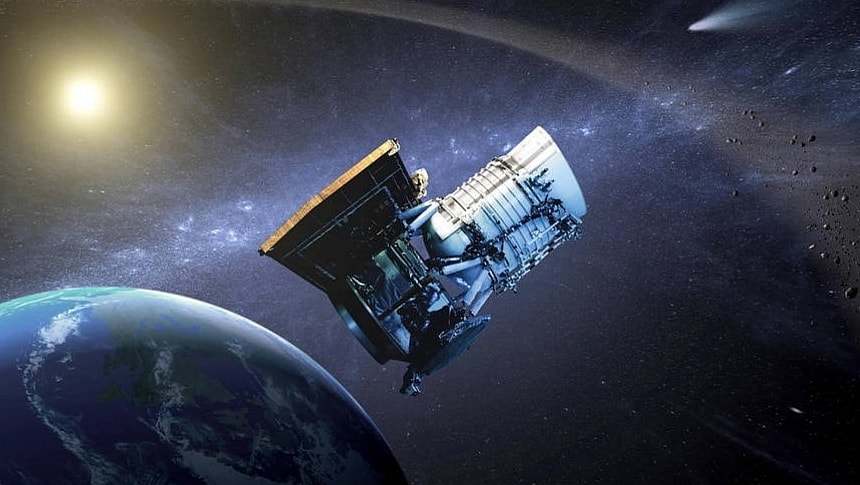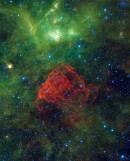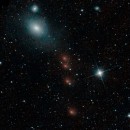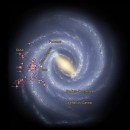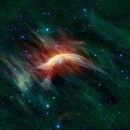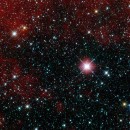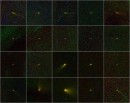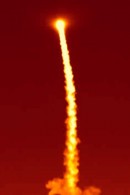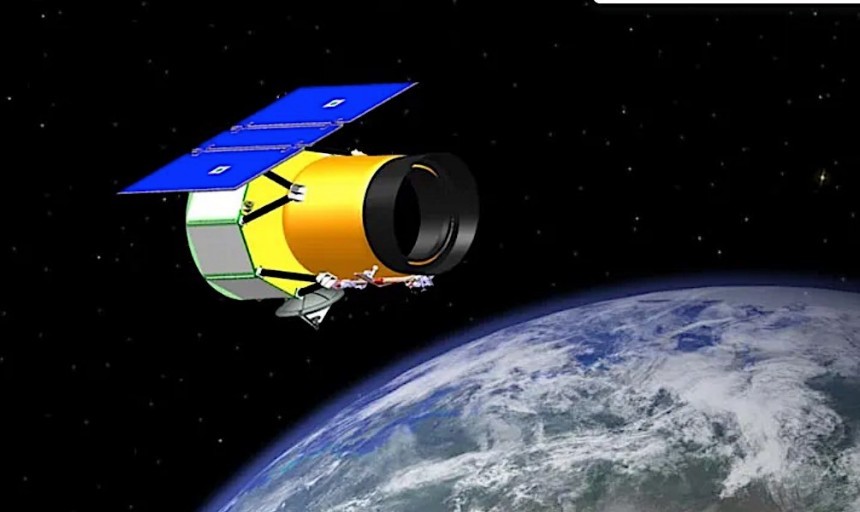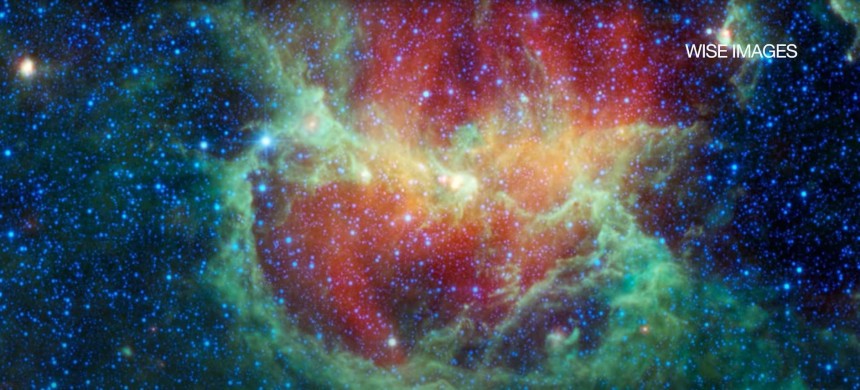There are about 20 high-profile NASA spacecraft currently in operation in the solar system, each performing various missions. Only one of them, however, is dedicated to scanning the sky for objects that might endanger life here on Earth. And at the end of this month, it will stop performing its duty.
The spacecraft is called Near-Earth Object Wide-field Infrared Survey Explorer (NEOWISE) and it is technically a telescope. A repurposed one, at that, as it was launched with another mission in mind entirely.
The thing was born as a cryogenic telescope that left our world at the end of 2009, and it wore the name Wide-field Infrared Survey Explorer (WISE). Its main mission was to have a look at the distant universe using four infrared wavelength bands.
And it did, for about a couple of years or so (a longer mission duration than the planned six-month one), managing to “scan the entire infrared sky” twice, with far greater sensitivity than any previous tools.
The telescope managed to give us a new perspective on distant galaxies, outgassing comets, exploding white dwarf stars, and brown dwarfs. More importantly, though, it managed to pinpoint “tens of millions of actively feeding supermassive black holes.”
Remember how I said the spacecraft was a cryogenic telescope? What that means is that the thing used cryogenic coolant (in this case frozen hydrogen) to keep its own heat from interfering with its findings. The coolant came in limited supply, and it eventually ran out, kind of making the telescope useless for the purpose it was designed.
That’s why the American space agency decided to place it in hibernation mode in 2011, in the hopes a better use for it could be found. And that’s exaclty what happened in 2013, when someone had the idea to use it as part of the planetary defense program. That’s an effort conducted by NASA and other agencies to identify asteroids and other types of cosmic debris that may pose a danger to our planet.
For its work as part of this program, the telescope was renamed NEOWISE, and the tool has been doing its thing for more than a decade now.
Using the same tools it departed our planet with back in 2009, the telescope managed during this time some incredible feats. It took no less than 1.45 million infrared measurements of an impressive number of over 44,000 solar system objects, identifying 215 new near-Earth objects, 25 of which are comets.
But now, another issue will effectively put an end to the telescope, and this time, there is no saving it: the influence of the Sun.
Our solar system’s star has a habit of going through intense activity cycles every 11 years or so. It happens to presently be smack down in the middle of such a cycle, and that significantly impacts the telescope’s orbit.
You see, NEOWISE does not have engines on its own to raise its orbit in case of need. The intense solar activity is expanding our planet’s atmosphere, and that, in turn, generates increased drag for objects floating in a near orbit (NEOWISE is located at about 300 miles / 500 km from the surface of the planet).
Constantly being slown down, the telescope will eventually become unrecoverable, and it will burn in the atmosphere. That’s supposed to take place in late 2024 or early 2025, but NASA is killing the telescope a lot sooner than that.
As per the latest update we got from the space agency, NEOWISE will stop conducting science on July 31. On August 8, it will once again be placed in hibernation, with no prospect of ever reviving it.
What does the end of the NEOWISE life mean for the planetary defense efforts? Well, in a nutshell, we’ll be left without a dedicated eye in the sky for the next few years. NASA is hard at work preparing a replacement for the NEOWISE, but it won’t launch it until late 2027.
The new piece of hardware is called Near Earth Object Surveyor (NEO Surveyor), and it is described as ”the first purpose-built infrared space telescope dedicated to hunting hazardous near-Earth objects.”
The main mission of the telescope is to look for asteroids and comets that come within 30 million miles (48 million km) of Earth’s orbit and are more than 460 feet (140 meters across) - the ones that, according to NASA, “could cause significant damage to Earth if we don’t find them first.”
The Surveyor will use for its mission a single 20-inch (50 cm) infrared telescope, working in two heat-sensitive infrared imaging channels. This should allow it to “gain valuable information about their composition, shapes, rotational states, and orbits.”
The NEO Surveyor is scheduled to stay in orbit for about five years, and it should play a major role in America’s aim of finding more than 90 percent of the dangerous objects floating around our planet.
The thing was born as a cryogenic telescope that left our world at the end of 2009, and it wore the name Wide-field Infrared Survey Explorer (WISE). Its main mission was to have a look at the distant universe using four infrared wavelength bands.
And it did, for about a couple of years or so (a longer mission duration than the planned six-month one), managing to “scan the entire infrared sky” twice, with far greater sensitivity than any previous tools.
The telescope managed to give us a new perspective on distant galaxies, outgassing comets, exploding white dwarf stars, and brown dwarfs. More importantly, though, it managed to pinpoint “tens of millions of actively feeding supermassive black holes.”
Remember how I said the spacecraft was a cryogenic telescope? What that means is that the thing used cryogenic coolant (in this case frozen hydrogen) to keep its own heat from interfering with its findings. The coolant came in limited supply, and it eventually ran out, kind of making the telescope useless for the purpose it was designed.
For its work as part of this program, the telescope was renamed NEOWISE, and the tool has been doing its thing for more than a decade now.
Using the same tools it departed our planet with back in 2009, the telescope managed during this time some incredible feats. It took no less than 1.45 million infrared measurements of an impressive number of over 44,000 solar system objects, identifying 215 new near-Earth objects, 25 of which are comets.
But now, another issue will effectively put an end to the telescope, and this time, there is no saving it: the influence of the Sun.
Our solar system’s star has a habit of going through intense activity cycles every 11 years or so. It happens to presently be smack down in the middle of such a cycle, and that significantly impacts the telescope’s orbit.
You see, NEOWISE does not have engines on its own to raise its orbit in case of need. The intense solar activity is expanding our planet’s atmosphere, and that, in turn, generates increased drag for objects floating in a near orbit (NEOWISE is located at about 300 miles / 500 km from the surface of the planet).
As per the latest update we got from the space agency, NEOWISE will stop conducting science on July 31. On August 8, it will once again be placed in hibernation, with no prospect of ever reviving it.
What does the end of the NEOWISE life mean for the planetary defense efforts? Well, in a nutshell, we’ll be left without a dedicated eye in the sky for the next few years. NASA is hard at work preparing a replacement for the NEOWISE, but it won’t launch it until late 2027.
The new piece of hardware is called Near Earth Object Surveyor (NEO Surveyor), and it is described as ”the first purpose-built infrared space telescope dedicated to hunting hazardous near-Earth objects.”
The main mission of the telescope is to look for asteroids and comets that come within 30 million miles (48 million km) of Earth’s orbit and are more than 460 feet (140 meters across) - the ones that, according to NASA, “could cause significant damage to Earth if we don’t find them first.”
The Surveyor will use for its mission a single 20-inch (50 cm) infrared telescope, working in two heat-sensitive infrared imaging channels. This should allow it to “gain valuable information about their composition, shapes, rotational states, and orbits.”
The NEO Surveyor is scheduled to stay in orbit for about five years, and it should play a major role in America’s aim of finding more than 90 percent of the dangerous objects floating around our planet.
